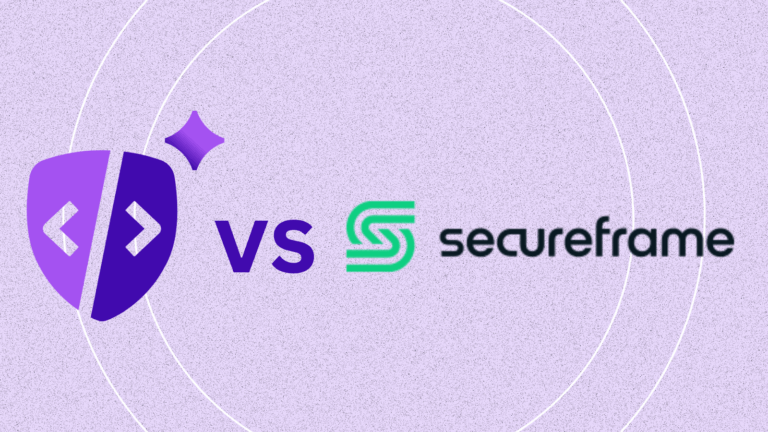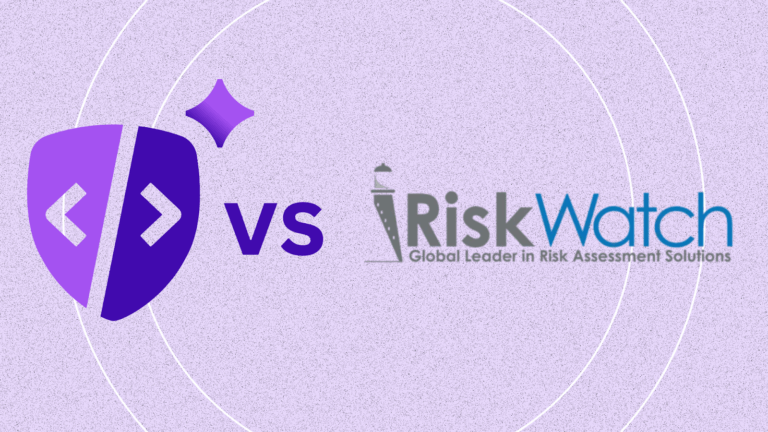PCI DSS 4.0.1 expects you to control both the way your program runs and what actually happens on live payment pages. Hyperproof is an AI-powered GRC and compliance operations platform. It helps teams manage PCI DSS 4.0.1 with prebuilt PCI programs, cross-mapped controls, automated evidence collection, and integrated risk management. PaymentGuard AI focuses on the browser, where card data is entered. It monitors scripts on payment pages and automates evidence for Requirements 6.4.3 and 11.6.1. Used together, you connect strong program governance with real-time client-side assurance.
Hyperproof: Compliance operations, PCI templates, and integrated risk
Hyperproof is an AI-powered compliance and risk platform that brings frameworks, risks, and evidence into one place. It offers out-of-the-box PCI DSS 4.0.1 program templates with requirements and controls that you can tailor, plus automation that keeps evidence fresh through integrations with cloud, identity, and security tools. Hyperproof’s common control framework supports more than 100 frameworks, including PCI DSS, SOC 2, ISO 27001, and others, so PCI work can be reused when you expand into new standards.
Third party reviews describe Hyperproof as strong at centralizing controls, automating recurring tasks, and connecting risk and compliance, with some users noting a learning curve and heavier navigation for very large control sets. Pricing is quote based. Independent benchmarks suggest starting tiers around twelve thousand dollars per year, with cost increasing based on users, frameworks, and scope.
Key strengths:
- PCI DSS 4.0.1 program templates and a PCI framework in a library of more than 70 frameworks
- Automation of evidence collection via integrations, with continuous control monitoring and reminders
- Integrated risk management that links risks, controls, and tasks in one platform
Feroot PaymentGuard AI: Real-time client-side protection and compliance
PaymentGuard AI protects what runs inside your customer’s browser. It keeps a live inventory of every script and third-party tag on payment and checkout pages, tracks changes over time, and watches for behaviors that suggest tampering or data exfiltration. All of that activity is translated into evidence that maps directly to PCI DSS 4.0 Requirements 6.4.3 and 11.6.1, which focus on client-side code integrity and detection of unauthorized changes.
Key strengths:
- Live script and tag inventory on payment pages with continuous monitoring
- Behavioral analysis that detects unexpected code changes, suspicious network calls, or data leaks in the browser
- QSA-ready reports aligned specifically to PCI DSS 6.4.3 and 11.6.1
This gives your team a clear view of what is happening where cardholder data is actually entered, and proof that monitoring is always on.
Feature comparison table
| Capability | PaymentGuard AI | Hyperproof |
| Primary focus | Real-time client-side protection and compliance automation for payment pages | AI-powered GRC platform for compliance operations and risk management |
| PCI DSS support | Automates monitoring and evidence for 6.4.3 and 11.6.1 on the client side | Provides PCI DSS 4.0.1 templates, control mapping, cross-framework reuse, and automated evidence collection for all PCI requirements |
| Control domains | Browser scripts, payment page integrity, client-side data protection | Policies, technical and administrative controls, risks, vendors, and evidence across systems |
| Threat monitoring | Detects script tampering, unauthorized DOM changes, and data leaks in the browser | Tracks control status and risk information through tasks, issues, and integrated signals from other tools. Technical scanning is handled by external scanners |
| Evidence automation | Generates client-side compliance logs and reports mapped to 6.4.3 and 11.6.1 | Automates evidence collection across 60+ integrations and centralizes artifacts for PCI and other frameworks |
How Feroot PaymentGuard AI and Hyperproof work together
Hyperproof manages the program side of PCI DSS. It gives you a PCI DSS 4.0.1 template, maps requirements to controls, connects to your existing tools, and automates evidence collection and task management. PaymentGuard AI manages the runtime client-side layer. It monitors scripts in the browser after the page loads and produces detailed evidence that those scripts are controlled and watched in line with 6.4.3 and 11.6.1.
In practice, you can treat PaymentGuard AI as a technical control that feeds Hyperproof. Client-side reports and alerts from PaymentGuard AI can be attached as evidence to PCI DSS requirements in Hyperproof, so your PCI program view includes both process artifacts and live technical proof from the payment page.
How to decide which solution works best for your organization
Choose Hyperproof if:
- You want a centralized place to manage your PCI DSS 4.0.1 program, track controls, and automate evidence across cloud, identity, and security tools.
- You need a way to organize SAQs, ROC preparation, and cross-map PCI controls with frameworks like SOC 2 and ISO 27001.
Choose Feroot PaymentGuard AI if:
- You handle payment data in the browser and rely on third-party scripts, tags, or iFrames on your checkout pages.
- You need automated evidence for PCI DSS 6.4.3 and 11.6.1 with real-time script monitoring and client-side change detection.
Best results come from using both: Hyperproof keeps your PCI program clear and audit-ready, while PaymentGuard AI verifies that your client-side controls work where customers actually enter their card data.
FAQ
Does Hyperproof itself satisfy PCI DSS 6.4.3 and 11.6.1?
Hyperproof helps you document and manage all PCI DSS 4.0.1 requirements with templates, controls, and evidence. It does not directly monitor scripts running in the browser or detect client-side code changes. To meet 6.4.3 and 11.6.1 in practice, you still need a technical control such as PaymentGuard AI or another monitoring tool to provide real client-side visibility.
How does PaymentGuard AI help during PCI DSS audits?
PaymentGuard AI creates a traceable record of client-side monitoring. Auditors can see which scripts are present on payment pages, how they changed over time, and what alerts were raised or resolved. That evidence is organized around Requirements 6.4.3 and 11.6.1, so QSAs can confirm that you are detecting unauthorized script changes and monitoring browser-side behavior continuously.
How do pricing models typically compare between Hyperproof and PaymentGuard AI?
Hyperproof pricing is provided by quote. Independent sources suggest entry pricing starting around twelve thousand dollars per year, with higher tiers for more users, frameworks, and advanced features. PaymentGuard AI is also positioned for mid-market and enterprise teams and is usually priced based on number of payment pages, number of monitored domains, or scope. In both cases, most organizations engage vendors for a tailored proposal.
Summary
Hyperproof and PaymentGuard AI support PCI DSS 4.0 in different but complementary ways. Hyperproof brings structure and visibility to your entire compliance program with PCI DSS 4.0.1 templates, automated evidence collection, and integrated risk management. It helps your team stay organized and aligned as you work through all PCI requirements across cloud, identity, and operational systems. PaymentGuard AI focuses on the browser environment where customers enter card data. It monitors every script on payment pages in real time and turns that activity into clear evidence for Requirements 6.4.3 and 11.6.1. When paired together, you gain a complete picture: Hyperproof keeps the program on track, and PaymentGuard AI confirms that your client-side controls are functioning exactly as PCI DSS expects.
See how PaymentGuard AI automates compliance, book your free demo today.


